Inside: Want to be an ally to people of color and Black families and teach your kids the beauty of diversity? Here are 9 ways white families can be an ally and show kindness to Black American families.
Note: As I have continued to learn from other moms in our community, I have been updating, correcting, and adding to this post. Thank you for continuing to teach me. I am listening.
I was standing waiting to pick up my youngest daughter from preschool a few years ago. I was chatting with another mom, as you do when you’re waiting for a 4-year-old to gather all their things.
And I really couldn’t tell you how the conversation switched.
But it did.
We were talking about family rules we had in our homes and my white friend mentioned her son isn’t allowed to ever wear a hoodie.
I just stared at her. And then it dawned on me.
Oh my God, I said.
And she just let it sink in.
Her son is Black. And out of necessity, she has taught him he is never allowed to have his hood up on his sweatshirt.
And he’s not allowed to walk around with his hands in his pockets.
And if he meets a police officer, he needs to keep his hands visible at all times.
He’s super cute and itty bitty now with an infectious smile, but he will one day grow up to be a black teen and then a black man.
And these rules might one day save his life.
That moment was the first time I truly saw my white privilege.
I don’t have to teach my son those rules. He can wear a hoodie whenever he wants. He can keep his hands in his pockets. And I’ve taught him police officers are people we go to when we’re scared or hurt or in trouble.
My daughter was good friends with this little Black boy. They had playdates and picnics and created all sorts of imaginary worlds together. But in that moment, I realized it wasn’t enough to “just” be friends with people who don’t look like us.
White families have to do more to not only show kindness to families of color. We have to be allies.
And that’s never been more true than now.
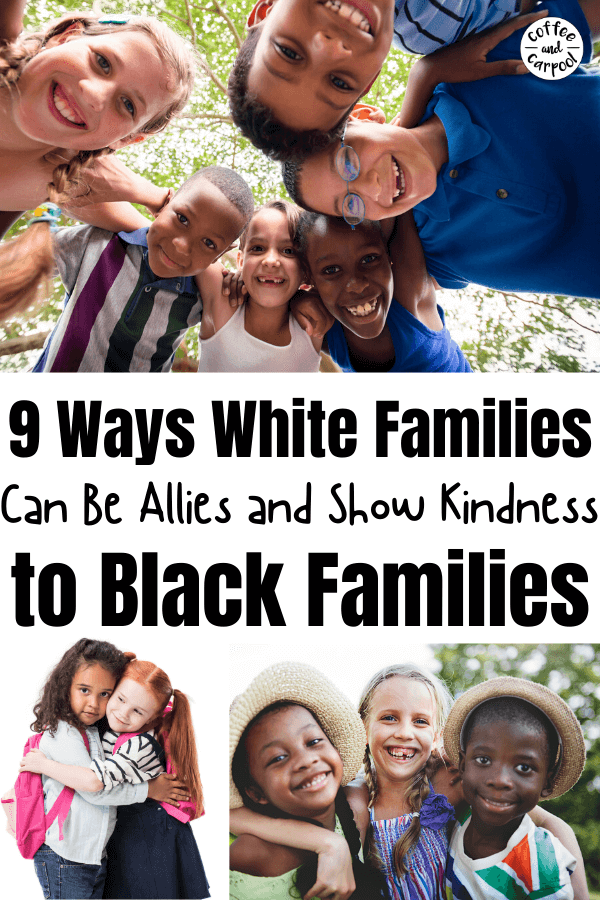
How White Families can Be an Ally and Show Kindness to Black Families
We spend a lot of time talking about kindness and bullying prevention and how to stand up to bullies.
And in one of my most popular articles ever about dealing with bullies, we talk about how it’s not enough to not be a bully. We also have to stand up to bullies.
Because when we stay silent, even if we’re not the one causing the hurt and pain, we’re giving our implied consent that their behavior is okay.
So when we see something, we have to say something. We have to say “no” and “stop” and “you can’t do that anymore.”
We have to be upstanders. We have to step in and say “enough is enough.”
And we need to take these same principles we teach our kids about bullying and apply it to race relations.
Black Americans in this country are hurting. And while this is nothing new, many white families are starting to finally take notice. (Again, that’s our white privilege showing. Since it wasn’t directly affecting us we weren’t paying attention…But we’re paying attention now.)
Black people are unsafe in their own homes, schools, and communities.
Routine police stops turn into death sentences. Going for a run turns into a death sentence. Wearing a hoodie with your hands in your pockets turns into a death sentence.
And white supremacists think they have been given implied consent from the rest of us because of our silence.
So, folks, it’s time to declare loudly, enough is enough.
But if you’re anything like me, you’re also wondering, what can I do to stop this? How can I talk to my white children so we break this cycle of hatred and racism in our country?
How can we teach our kids that racism is never okay in the same ways we teach our kids to be kind to others and to stand up to bullies?
Embracing Diversity Starts With Us
Just like we have to be intentional about raising our kids to be kind, we have to be intentional about being an ally to BIPOC* in our community. *Black, Indigenous and People of Color.
Dana Michelle who hosts Dana Being Dana and I sat down to talk about how white mothers can support Black mothers. I asked her, “How can we be an ally? How can we show up for you? How can we teach our children to do better than our generation?”
I told her that so many white families want to be allies. But we don’t know how.
Together, we came up with some ideas of how we can be allies and show kindness to Black families and the first one we talked about will have the most impact for our young families.
1. Intentionally Engage and Connect with People Who Don’t Look Like You
Dana and I both talk about this: since we create the social dynamic for our children, either consciously or unconsciously, we have to pay attention to who we talk to after school, who we engage with at school parties, and who we invite over for playdates.
Dana asked me the pointed question: “Do you only talk to the white people in the room? Or do you expand your social network and engage with and connect with people who don’t look like you?”
As parents, we have to go out of our way to include others…to purposefully seek diversity.
We need to get out of our comfort zone and go talk to the black moms sitting together at swimming class or at soccer practice. Strike up a conversation. Find common ground. And since we’re moms, we always have something to talk about.
Related: How Introverts Can Make Mom Friends
It takes time, Dana reminded me, but we can create a diverse environment for our kids to grow up in even if we don’t live in a community with a lot of diversity.
But it starts with us. The examples we set.
Our kids will notice us talking to Jose’s mom and Freddie’s mom.
Or they’ll notice us only talking to other white families.
2. Seek out Diverse Friendships for your kids
So connecting with other moms who don’t look like us is a great start. But we can also help our friends connect with their children.
I live in a very white neighborhood where there is not much diversity.
Seriously, when my son and his friends are all wearing helmets on their bikes, it can be hard to tell them apart from a distance.
But we can go to places with more diversity.
We can reach out and spend time with people who can teach us more about the world around us.
When our kids mention a classmate they play with at school, reach out to the parents and invite them over for a playdate.
If we have young children, we can direct and encourage their social interactions to include friends who don’t look like them.
But it doesn’t happen on accident. As Dana reminded me, we have to be intentional.
When we befriend people of color, not all of our friends will look like us. And that’s a beautiful thing.
Related: How to Help Kids Be a Good Friend
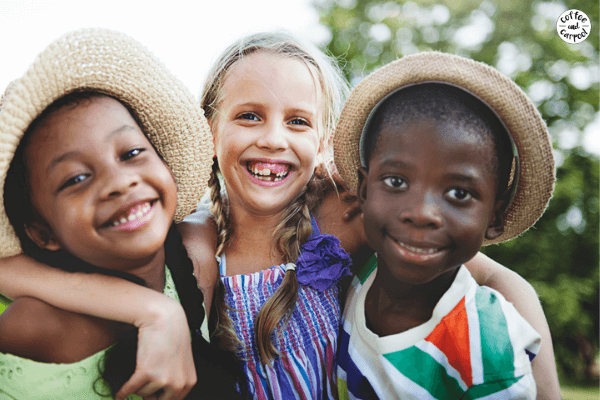
3. Be intentional about teaching your kids about racism and race
In the past, I would chat with my kids about Black History near Martin Luther King, Jr’s birthday. We talked about the amazingness of Black women mathematicians after we watched Hidden Figures. We have skin color crayons my kids can use when drawing people.
But we had never intentionally talked to our kids about race and skin color and racism.
We never talked to them about white supremacists and blacks being murdered and systemic racism.
Why?
Well, for a few reasons. We didn’t realize how bad it really was for the Black community. We wrongly thought that while there were still racists, Black people were treated equally because that’s the law (again, that’s our white privilege showing).
It’s painfully uncomfortable to talk about hard things like this. And it’s not easy to make emotionally hard topics simple and not scary for our young kids, but also meaningful.
And, it’s also easy to use the excuse, ‘my kids are too young’ or we want to protect them from this.
But they’re not too young. We can start working on this now.
As we drove to our first Black Lives Matter rally and our kids asked us why we’re going on a beautiful Sunday instead of playing back at home, we told them this:
Black people are dying. They’re being killed because they have black skin. And we have a strong voice so we have to use it. We have to stand up and say “no.” We have to stand up and say, “You matter.” And showing up and having other white families see us doing this helps make it “normal” so they can stand up too. And Black families see us and know they have allies. They’re not as alone as they first thought they were.
We have to have intentional conversations about race with our kids.

And while the conversations might get easier the more you do it, it never gets easy.
But that’s okay. It’s okay to be a little uncomfortable. We have to do it anyways. It’s our job.
And there are resources to help you:
Or get resources of how to talk to your young kids about race here.
This Kindergarten teacher explains racism to kids so you can learn with your kids.
And read this book with your kids.
4. Know the Difference between Tolerance, Acceptance, and Celebrated
People are talking about tolerating others. Tolerating people of color. Um, no.
Do you want your kids to be “tolerated?” It sounds awful, doesn’t it?
I tolerate mammograms and traffic and annoying seagulls at the beach.
The goal is not to tolerate people of color.
I want my kids to be celebrated and appreciated.
Just like Black mothers and Black fathers want their children to be celebrated and appreciated.
We have to teach our kids it’s okay to be different. Our differences make this world a better place. 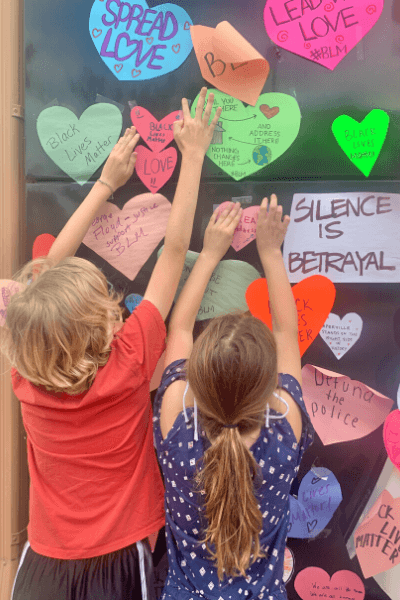
Ready to work on celebrating our differences?
Explain it to your kids: It’s okay to be different. If we were all the same, it would be boring. Some of us have different hair color. Some of us have bodies that work differently. Some of us have different skin colors. And that’s amazing.
Use this Different is Beautiful Emergent Reader from A Dab of Glue Will Do
And then read books about race, different skin colors, and celebrating being different.
Here are a few of our favorites:
We’re Different, We’re the Same
Get more Multicultural books here.
5. Be Mindful of How You Speak About Race and People of Color
We all know that as soon as we think our kids aren’t listening, they are listening to every word.
They absorb what we say and what we do so we have to be careful. Our words will become their inner voice, their guiding light.
When they face a Black person they’ve never met before, how will they respond?
Probably the way we respond when we see a Black person.
How we talk about color and race and our differences will become how our children feel about color and race and our differences.
Do you use negative stereotypes? Do you make thoughtless comments? Do you make tasteless jokes about race? Do you laugh at tasteless jokes about race?
Children are taught to hate. By listening to us and watching us and learning from us.
Or.
Or, they can learn to love. By listening to us and watching us and learning from us.
Choose love.
6. Acknowledge your own White Privilege
I didn’t really know what this meant until I met that mom at preschool pick up. And honestly, this video also helped me understand the head start my pale skin gives me.
But I know the term ‘white privilege’ angers many white people. I’ve read the comments on how their struggles are real too and so there is no such thing as white privilege.
Here’s the reality I had to learn: Acknowledging that we have certain privileges due to our white skin doesn’t mean we don’t struggle. It means our skin color isn’t one of the reasons we struggle.
I don’t walk down the street and look suspicious.
My son can wear a hoodie and not be labeled a thug.
The police are “good” and I teach my kids to turn to them if they need help.
I am not afraid to die if I get pulled over by a police officer.
My husband can go for a run and not get murdered because he looks dangerous.
I am still shocked that blatant racism still exists in my hometown.
That is all white privilege.
So my friends, we have white privilege whether we know it or not. In fact, the irony is, when we don’t think we have it, that’s when we really, really have it. We have the privilege of not even being aware of the struggles of Black people and people of color.
How do we work on it?
Don’t be shocked when the racists wave their flags and spew messages of hate with their spray paint and fire their guns. If we’re shocked then we haven’t been paying attention.
Be aware that we have an easier time of it than if we had dark skin.
And acknowledge, and then be saddened that mothers of Black children have to teach their sons to never wear hoodies.
See their struggle.
Acknowledge it. Condemn it. Talk about it with your children and with others.
Want a resource to talk to your kids about white privilege? This will help you.
7. Be Anti-Racist
In our home, we teach our kids not to be bullies. But as we have talked about before, that’s not enough anymore.
We also have to teach them to be anti-bullying. They have to stand up against bullying behaviors even if it’s uncomfortable. We teach them if they see something, they say something. We practice being an upstander, to stand up for people who need to borrow our voice.
And this same concept applies to racism.
At the peaceful protest rally in my hometown the other day where I first heard Dana Michelle speak, from the podium, she explained, “It’s not enough to not be a racist. We have to be anti-racist.”
When we witness racism and we say nothing, our silence is implied consent.
So we can’t just not be a racist. We have to be against racism.
Related: 20 age by age resources for parents to raise anti-racist kids
We have to tell our friends and family to stop using derogatory words or repeating tasteless, thoughtless, racist jokes. We have to let the people in our circle of influence know racism will not be tolerated in our presence.
And watch this Brown Eyed Blue Eyed Experiment done by Jane Elliot from 1970
Want fun ideas to help kids understand anti-racism? You’ll love these 20+ anti-racism activities from Happy Toddler Playtime
8. Read Books with Diverse Characters:
Our kids learn more than just reading when they look at books. They learn about the world around them. They learn facial expressions and empathy and emotions. They learn about different cultures and different experiences and different people.
When our white kids are exposed to books with only white characters, they’re not exposed to the beauty that is the diversity of the world around us.
One simple fix? Intentionally get books with characters of different ethnicities so our kids can hear their stories and learn about different cultural experiences.
Pitfall to Avoid: Don’t just pull these books out during Black History Month in February. Have them out and accessible to our kids year-round. Fill your bookshelves. Read them and enjoy them together.
Here are a few great books to start with:
Mufaro’s Beautiful Daughters, An African Cinderella Tale
Keena Ford and The Field Trip Mix-Up
President of the Whole 5th Grade
Books that celebrate different ethnicities and heritages:
Yeh Shen: A Cinderella Story from China
Here’s a list of 40 diverse and anti-racist books from The Mom Trotter.
9. Offer Diverse Toys and Multicultural Craft Supplies
In my daughter’s two-year-old Mommy and Me classroom, they had an incredible collection of toys and age-appropriate manipulatives for the kids.
Among some of my daughter’s favorites were baby dolls and a giant dollhouse.
But the reason these toys were extra incredible? They had Black dolls and Asian-American dolls and white dolls. And the kids played with them all.
Offering toys with all kinds of skin colors “normalizes” interacting with toys, and by extension to young kids’ little brains, people of different skin colors.
We can also get them multicultural crayons, skin color markers, and skin color paint colors.
In my Kindergarten classroom, we would mix all the browns to find the just-right skin color for each kiddo so they could paint a true handprint for themselves. And the sea of brown hands were gorgeous.
We don’t need to be “colorblind.”
We are all different colors and that’s beautiful.
Our job is to help our kids see the beauty in the different shades of brown.
Our job is to talk to our kids about how treating others poorly because of their skin color is not okay. Label it and call it racism. Tell them “in our family, we stand against racism because it is wrong.”
Our job is to be an ally and show kindness to Black families.
And our job is to help create the next generation of black, brown, and white children who aren’t scared to wear hoodies.
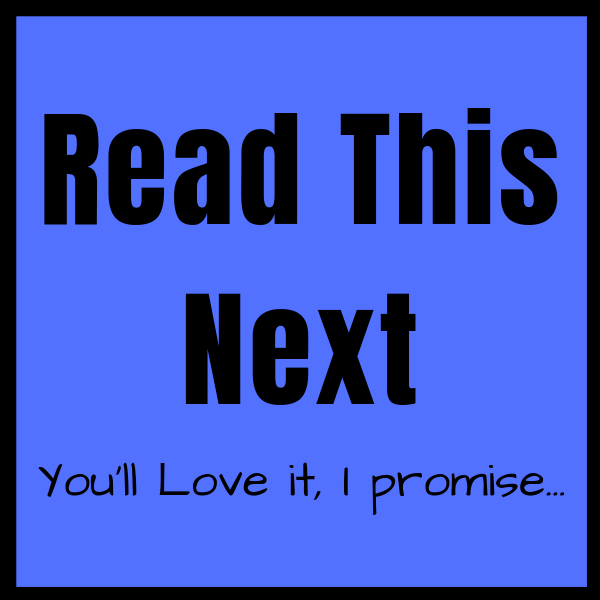

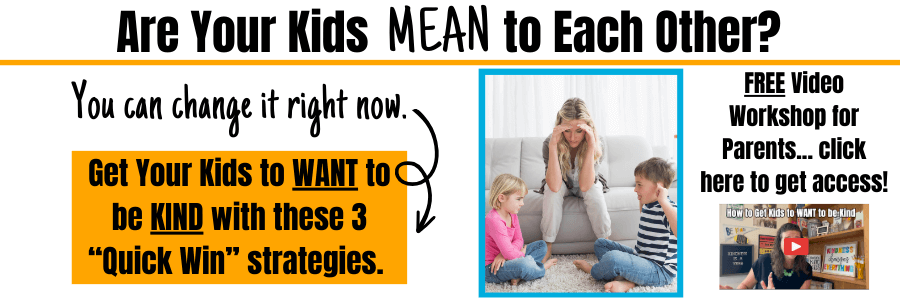

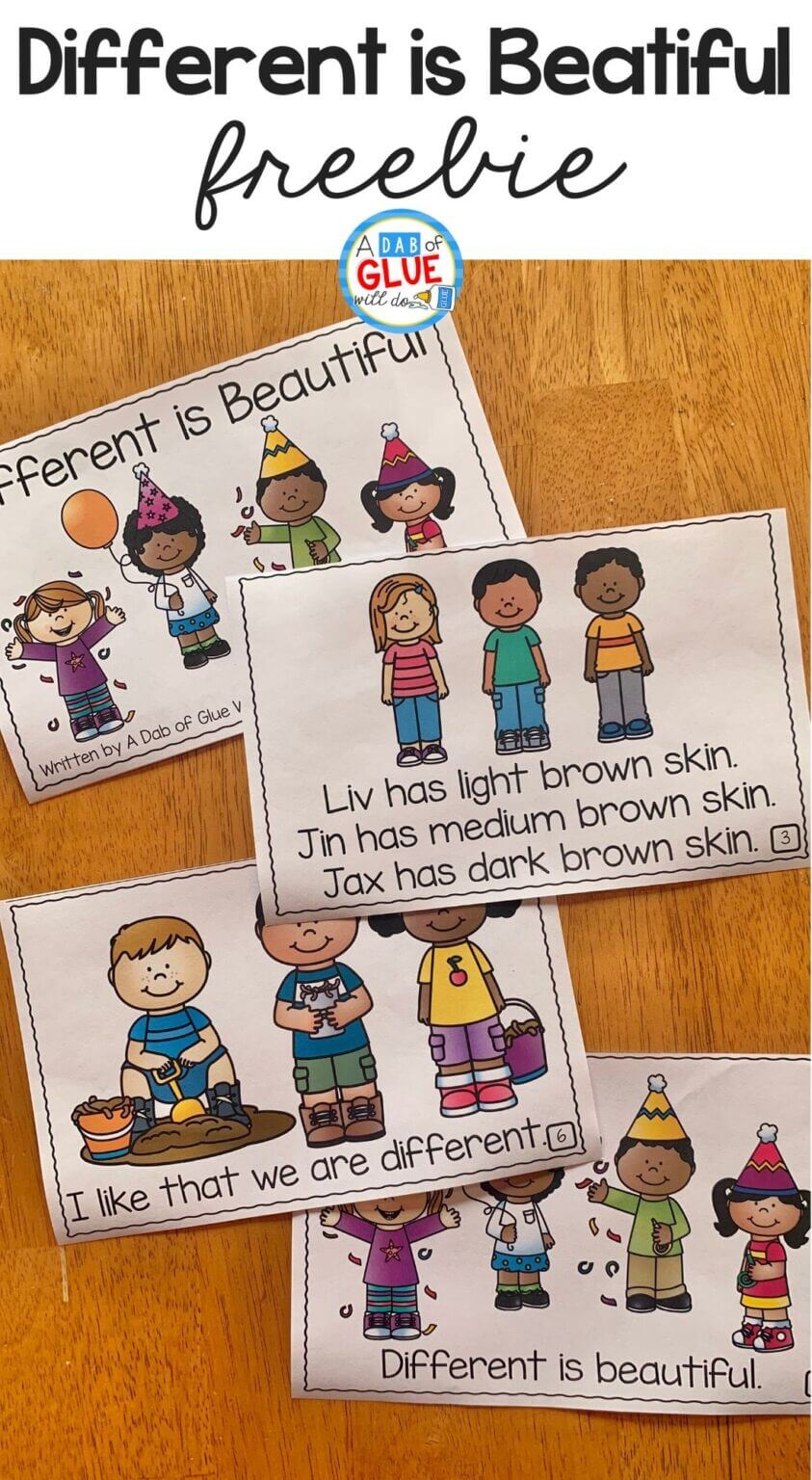











































AA says
Hi, awesome post, thank you for this. Just a note on multicultural dolls – definitely a good practice in multicultural classrooms. More problematic in homeschool situations. Here in Australia there is a lot of pain still attached to the Stolen Generations, where Aboriginal and Islander children were forcibly taken from their families and placed in state care homes or adopted by white families. Understandably, that pain is refreshed by white children buying dark-skinned dolls to play with, so eg, school fete stalls with dolls knitted from black wool may be faced with upset people objecting, etc. So I probably wouldn’t recommend a white family buy baby dolls too far different from their own appearance for home play. Maybe keep the multicultural diversity for the types of little dolls where you’re roleplaying a whole community, like Little People or Duplo.
Nicole Black says
That’s a perspective I’ve never heard of before. Thank you for sharing your perspective and insight. These are general ideas for our community as a whole, so understandably they won’t work for everyone.
Judi Matalik says
This was awesome! Thank you. I think for many of us, we say we aren’t racist, but do nothing to stop it around us. If it’s ok with you, I am going to print this for my preschool teachers to read.
Nicole Black says
Of course. Thank you for sharing it with them.